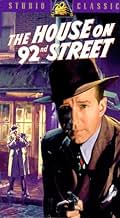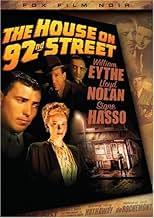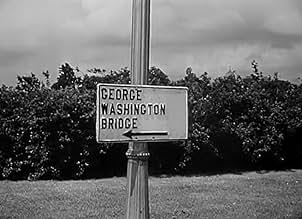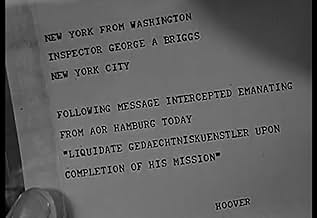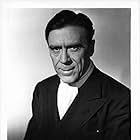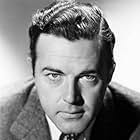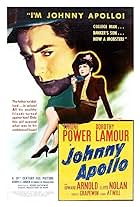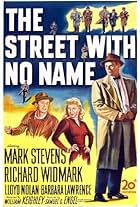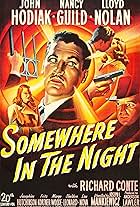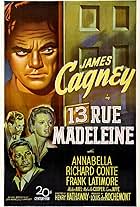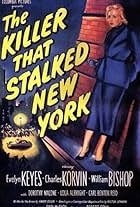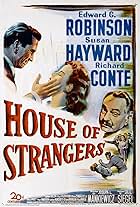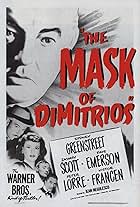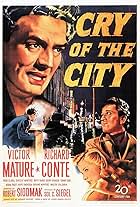IMDb RATING
6.6/10
3.4K
YOUR RATING
Bill Dietrich becomes a double agent for the F.B.I. in a German spy ring.Bill Dietrich becomes a double agent for the F.B.I. in a German spy ring.Bill Dietrich becomes a double agent for the F.B.I. in a German spy ring.
- Won 1 Oscar
- 2 wins total
William Post Jr.
- Walker
- (as William Post)
William Adams
- Customs Officer
- (uncredited)
Frieda Altman
- Saboteur
- (uncredited)
William Beach
- Saboteur
- (uncredited)
Carl Benson
- German Spy Trainee
- (uncredited)
Hamilton Benz
- Saboteur
- (uncredited)
Storyline
Did you know
- TriviaThe movie deals with the theft by German spies of the fictional "Process 97", a secret formula which, the narrator tells us, "was crucial to the development of the atomic bomb." The movie was released on September 10, 1945, only a month after the atomic bombs had been dropped on Japan, and barely a week after Japan's formal surrender. While making the film, the actors and Director Henry Hathaway did not know that the atomic bomb existed, nor that it would be incorporated as a story element in the movie. (None of the actors in the film mentioned the atomic bomb.) However, co-Director and Producer Louis De Rochemont (who produced the "March of Time" newsreel films) and Narrator Reed Hadley were involved in producing government films on the development of the atomic bomb. (Hadley was present at the final test of the bomb in Los Alamos, New Mexico, in July, 1945.) After the bomb was dropped on Hiroshima, Hadley and Screenwriter John Monks, Jr. hastily wrote some additional voice-over narration linking "Process 97" to the atomic bomb, and Rochemont inserted it into the picture in time for the film's quick release.
- GoofsThe description of a one-way mirror as an "X-ray" mirror at the beginning is nonsense. A one-way mirror is in fact merely a partially-silvered mirror. It becomes "one-way" by virtue of different lighting on either side - one side dimly lit, the other brightly lit. From the side that's brightly lit, it appears to be a normal mirror because the reflection washes out any light coming through from the dim side. But from within the dim side, everything on the bright side is readily visible because the light coming through predominates over the reflection seen from the dim side.
- Quotes
Agent George A. Briggs: We know all about you, Roper. We've traced you to the day you were born. We even know the approximate day you will die.
- Crazy creditsOpening credits are shown as someone flipping through the pages of a file.
- ConnectionsReferenced in 23 Paces to Baker Street (1956)
- SoundtracksTra-La-La-La
(uncredited)
Music by Harry Warren
Played as background music at the talent agent's office
Featured review
The highly gifted natural and trained talent of Lloyd Nolan adorns this story of espionage and counterespionage in the US just prior to and after WWII was declared.
Playing a key FBI agent, Nolan displays the totally convincing work he rendered throughout his career. He heads a strong cast: Signe Hasso and Leo G. Carroll offer solid performances, and William Ethye is a good leading man.
Director Henry Hathaway mixes in authentic newsreel footage with care and balance. The result is a well done docudrama of the mid 40s.
It looks as though 20th Century Fox made a pact with the FBI for this project, with almost the complete Bureau being utilized for the shoot. The films emerges as a supreme tribute to the branch, with Chief Hoover's name frequently in evidence.
The work technically qualifies as propaganda, in which patriotic appreciation and support for the war effort is forthrightly projected.
Playing a key FBI agent, Nolan displays the totally convincing work he rendered throughout his career. He heads a strong cast: Signe Hasso and Leo G. Carroll offer solid performances, and William Ethye is a good leading man.
Director Henry Hathaway mixes in authentic newsreel footage with care and balance. The result is a well done docudrama of the mid 40s.
It looks as though 20th Century Fox made a pact with the FBI for this project, with almost the complete Bureau being utilized for the shoot. The films emerges as a supreme tribute to the branch, with Chief Hoover's name frequently in evidence.
The work technically qualifies as propaganda, in which patriotic appreciation and support for the war effort is forthrightly projected.
- How long is The House on 92nd Street?Powered by Alexa
Details
- Release date
- Country of origin
- Languages
- Also known as
- Hamburg Seven, Seven, Seven
- Filming locations
- Hamburg, Germany(second unit)
- Production company
- See more company credits at IMDbPro
Box office
- Gross US & Canada
- $2,500,000
- Runtime1 hour 28 minutes
- Color
- Aspect ratio
- 1.37 : 1
Contribute to this page
Suggest an edit or add missing content

Top Gap
By what name was The House on 92nd Street (1945) officially released in India in English?
Answer
